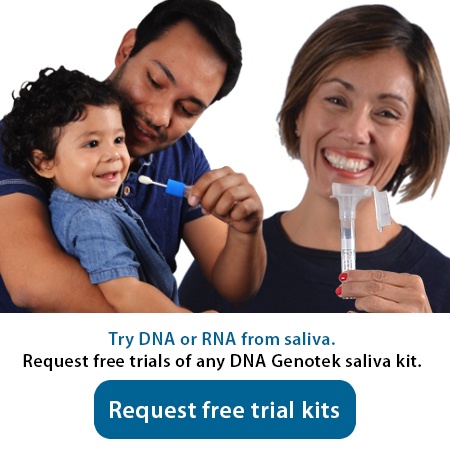2010-03-09
Recent statistics suggest cancer mortality rates are declining due to better prevention, early detection methods and improved treatments, yet so much remains to be done. With cutting-edge research continually pushing the boundaries of science and discovery, it is not surprising that an increasing number of cancer researchers are turning to the newest tool in the DNA collection toolbox - DNA from saliva.
Saliva has traditionally been overlooked as a source of DNA for cancer research but Oragene has changed that. What makes saliva-based DNA collection with Oragene so important to cancer research? Saliva provides a non-invasive means of collecting high quality and quantity DNA that is stable at room temperature, which makes samples easy to collect, store and ship. With geographically dispersed subjects, scientists can even mail Oragene kits to participants, who follow the directions, and return the saliva samples to the laboratory for analysis using standard mail service. Cancer research groups around the world are now focusing on the potential of this common bodily fluid for detecting the genetic link to the disease and studying genes without the need for a blood draw.
Now that researchers trust that DNA from saliva using Oragene is equivalent to DNA from blood, the door is open to populations they would normally not have access to. Collecting blood is very invasive and not a practical procedure for children or individuals that can't give blood for religious or medical reasons or for those who do not have access to a collection center. Compliance rates improve with saliva resulting in the collection of more samples.
Breast cancer researchers at the University of Arkansas for Medical Sciences (UAMS) are hoping to answer some important questions with DNA from saliva. They are building a repository aimed at studying breast cancer risk and treatment. Their goal is to collect 40,000 samples over a five year period. They want to learn why one individual is affected by breast cancer but another is not. Or why two women with the same disease respond differently to the same treatment. What inherited factors contribute to the disease? What environmental factors contribute to breast cancer? How do inherited and environmental factors interact to cause the disease?
The researchers decided to use Oragene because saliva-based collection offered them a non-invasive, easy-to-use and reliable method to collect the large number of DNA samples they need. The kit stabilizes DNA at room temperature until it can be analyzed, which eliminates storage and logistical issues. In addition, Oragene provides the high quality, high quantity DNA required for establishing the bio-repository. The reliability and ease-of-use also enabled on site event-based collections bolstering the donor group by thousands in a single day.
In another example, researchers at Inserm (I'Institut national de la santé et de la recherché medicale) in France are conducting a study on thyroid cancer using Oragene. The primary goal of the project is to better understand the risk factors associated with the development of thyroid cancer. The project will establish a DNA bank to permit future studies of candidate genes linked with thyroid cancer and to study gene-environment interactions. The team evaluated the possibility of collecting blood samples, buccal swabs or Oragene. After evaluating all options, they decided to use Oragene as it was the only method that allowed them to overcome their main challenge of maximizing compliance rates for geographically dispersed participants.
So, is saliva-based DNA collection the newest tool in the fight against cancer? Enabled by Oragene, the answer is a definitive ‘yes'. Cancer research with saliva DNA has definitely come of age.


